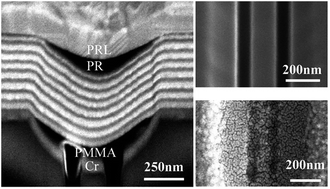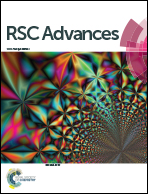Sub-diffraction demagnification imaging lithography by hyperlens with plasmonic reflector layer
Abstract
In recent years, hyperlens technology has attracted more attention because of its function of magnification and demagnification. In this study, hyperlens demagnification imaging lithography was experimentally demonstrated with sub-diffraction resolution of about 55 nm line width and about 1.8 demagnification factor at 365 nm. The hyperlens was composed of multiple Ag/SiO2 films and combined with a resist layer and a plasmonic Ag reflector. It was employed to project mask patterns to subwavelength images for nanolithography. It was found that the plasmonic reflector contributes remarkably to improving imaging contrast, fidelity and efficiency by inhibiting the negative influences from the radial electric field components in the resist region. Furthermore, discussions about imaging influences with geometrical parameters are also presented.


 Please wait while we load your content...
Please wait while we load your content...